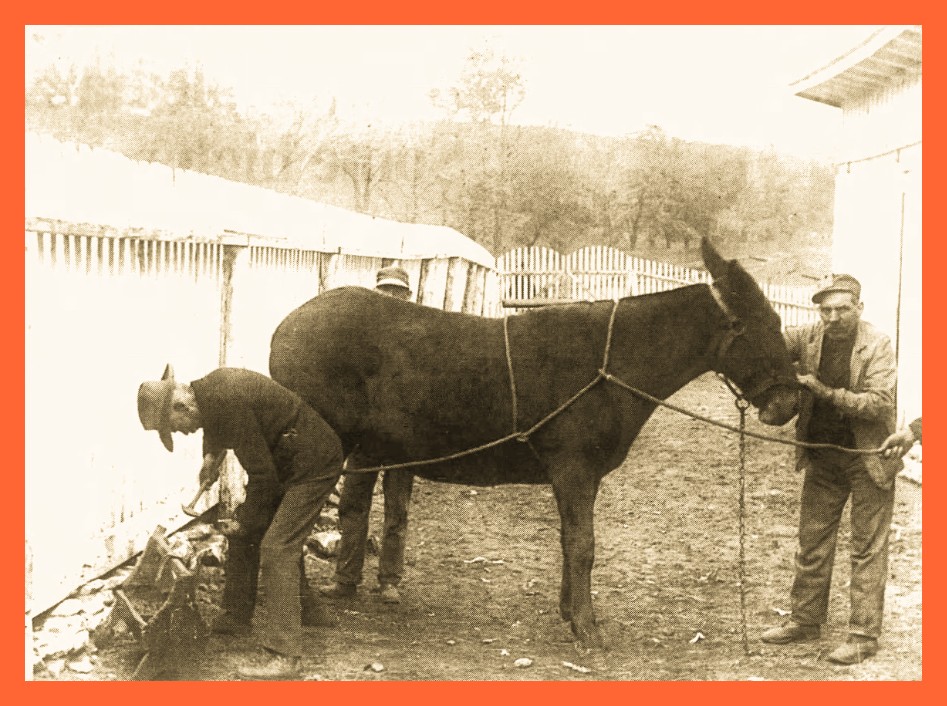A farrier at Suffolk Colliery shoes a mule for service in the mines. This photo was taken about 1900.
From a series of articles that appeared in the Pottsville Republican and Herald in 1997:
The Suffolk Colliery was located north of the village of St. Nicholas on Waste House Run Creek.
The original opening was a drift driven west on the South Dip Mammoth Vein by Frank Carter in 1860. It was later known as the No. 1 Drift and was mined by Carter until 1861.
In 1861, the Coal Creek Coal Company was formed by Pliny Fisk, Frank Carter and John Phillips, who continued mining the drift until 1864. The first known shipment of 13,220 tons was made in 1863.
In 1864, the colliery was sold to the Suffolk Coal Company, which began developing it, driving a tunnel north 230 feet to the Holmes and Primrose veins and numbering them the 2 and 3 Mines. It also drove two drift east on the South Dip Mammoth Vein and numbered them the 4 and 5 Mines
In 1866, the west gangway on the No. 1 Mine had been driven 3,600 feet; the 2 Mine, 1,900 feet; the No. 3 Mine, 1,300 feet; the No. 4 Mine, 700 feet, and the No. 5 Mine, 2,600 feet eastward.
In 1867, miners sank the slope 330 feet on the South Dip Primrose Vein and gangways were driven east and west. In 1874, it was extended 270 feet to the basin. A total of $180,000 was spent to improve the colliery.
The Suffolk Coal Company continued to operate the colliery until January 1, 1884, when the Philadelphia & Reading Coal & Iron Company took possession and sank the Holmes South Dip Slope.
In 1893, the company sank a tender slope 300 feet on the same vein.
In 1911, miners drove a haulage tunnel 471 feet north, connecting the No. 2 slope level with the Maple Hill No. 2 plane for transporting coal between the two collieries.
In 1914, an electric haulage system was installed in the No. 5 Drift and the Primrose Slope was sunk 621 feet to the second level in order to transport a part of Ellangowan Primrose Coal to Suffolk Colliery.
In 1915, electric haulage was put in service on the Holmes Slope gangways.
The Suffolk Colliery was one of the large producers, with a maximum in 1903 of 364,416 tons.
Mining ceased at Suffolk Colliery on February 6, 1941. The Suffolk boiler house was removed in 1940. The engine house, office buildings, compressor house, lamphouse and two fans were all removed in 1945.
Total shipments from the colliery until 1922 when tonnage was included with Maple Hill was 10,182,883 tons.
_______________________________________________
Article by Frank Blase, Historian, Reading Anthracite Company Historical Library, Pottsville Republican & Herald, August 30, 1997. Obtained from Newspapers.com.
Corrections and additional information should be added as comments to this post.
